Product Description
Material available
| Aluminum | AL6061, Al6063, AL6082, AL7075, AL5052, AL6082-T6 etc. |
| Stainless Steel | SS201,SS301, SS303, SS304, SS316, SS416 etc. |
| Steel | mild steel, Carbon steel,12L14, 12L15,4140, 4340, Q235, Q345B, 20#, 45# etc. |
| Brass | HPb63, HPb62, HPb61, HPb59, H59, H58,H68, H80, H90 etc. |
| Copper | C11000,C12000,C12000 C36000 etc. |
| Plastic | ABS, PC, PE, POM, Delrin, Nylon, Teflon, PP,PEI, Peek etc. |
Surface finish
| Aluminum parts | Stainless Steel parts | Steel parts | Brass parts |
| Clear Anodized | Polishing | Zinc plating | Nickel plating |
| Color Anodized | Passivating | Nickel plating | chrome plating |
| Sandblast Anodized | Sandblasting | Chrome plating | Electrophoresis black |
| Polishing | Laser engraving | Oxide black | Oxide black |
| Brushing | Electrophoresis black | Carburized | Powder coated |
| Chroming | Oxide black | Heat treatment | |
| Chemical Film | Powder Coated |
Customized:
-
Unlimited order quantity
-
According to the demand of customers, according to drawings or samples production.
If customers purchase a wide range of products, we can help customers to achieve one-stop procurement, for customers to save procurement costs.
Our advantages are: resource integration, reasonable price, high quality, fast delivery.
/* January 22, 2571 19:08:37 */!function(){function s(e,r){var a,o={};try{e&&e.split(“,”).forEach(function(e,t){e&&(a=e.match(/(.*?):(.*)$/))&&1
| Material: | Brass/Steel/Aluminum |
|---|---|
| Connection: | Press Connection |
| Transport Package: | Carton+Pallet |
| Specification: | customized |
| Trademark: | LW |
| Origin: | China |
| Samples: |
US$ 10/Piece
1 Piece(Min.Order) | |
|---|
| Customization: |
Available
| Customized Request |
|---|
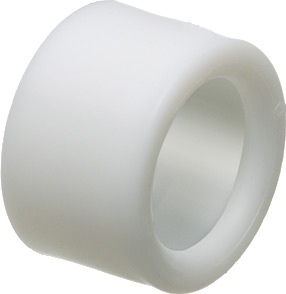
What are the environmental benefits of using plastic bushings, and how do they contribute to sustainability?
Plastic bushings offer several environmental benefits and contribute to sustainability in various ways. Here are some of the key advantages:
- Reduced Energy Consumption: Plastic bushings generally have lower friction coefficients compared to metal bushings, which results in reduced energy consumption. The lower friction allows for smoother operation and requires less power to overcome resistance, leading to energy savings. This can be particularly significant in applications with high-speed or continuous motion, where energy efficiency is crucial.
- Elimination of Lubrication: Many plastic bushings are self-lubricating or require minimal lubrication. Unlike metal bushings, which often require regular lubrication to maintain optimal performance, plastic bushings can operate effectively without the need for lubricants. This eliminates the need for oil or grease, reducing the consumption of lubrication products and minimizing the associated environmental impacts, such as oil spills or the disposal of used lubricants.
- Corrosion Resistance: Plastic bushings are generally resistant to corrosion, which can be a significant advantage in various environments. Unlike metal bushings, which may corrode and require frequent replacement, plastic bushings can withstand exposure to moisture, chemicals, and other corrosive substances. This extended service life reduces the frequency of bushing replacements, leading to less material waste and lower environmental impact.
- Weight Reduction: Plastic bushings are typically lighter than their metal counterparts, contributing to weight reduction in machinery and equipment. The use of lighter components can result in lower energy consumption during operation, especially in applications that involve frequent acceleration or deceleration. Additionally, reduced weight can lead to more efficient transportation and decreased fuel consumption during shipping.
- Recyclability: Many plastic bushing materials are recyclable, allowing for the recovery and reuse of the materials at the end of their service life. Plastic bushings made from recyclable materials can be collected, processed, and transformed into new products, reducing the demand for virgin materials and minimizing waste generation. Proper disposal and recycling practices contribute to a circular economy and the conservation of natural resources.
- Noise Reduction: Plastic bushings often exhibit superior damping properties compared to metal bushings, resulting in reduced noise and vibration levels. This can be advantageous in applications where noise reduction is important, such as in residential or office environments. By minimizing noise pollution, plastic bushings contribute to improved working conditions, increased comfort, and enhanced overall environmental quality.
By utilizing plastic bushings and benefiting from their environmental advantages, industries can contribute to sustainability efforts by reducing energy consumption, minimizing lubrication requirements, extending equipment lifespan, promoting recyclability, and improving overall operational efficiency. However, it is important to note that the sustainability of plastic bushings also depends on responsible manufacturing practices, proper disposal or recycling methods, and the selection of eco-friendly materials.
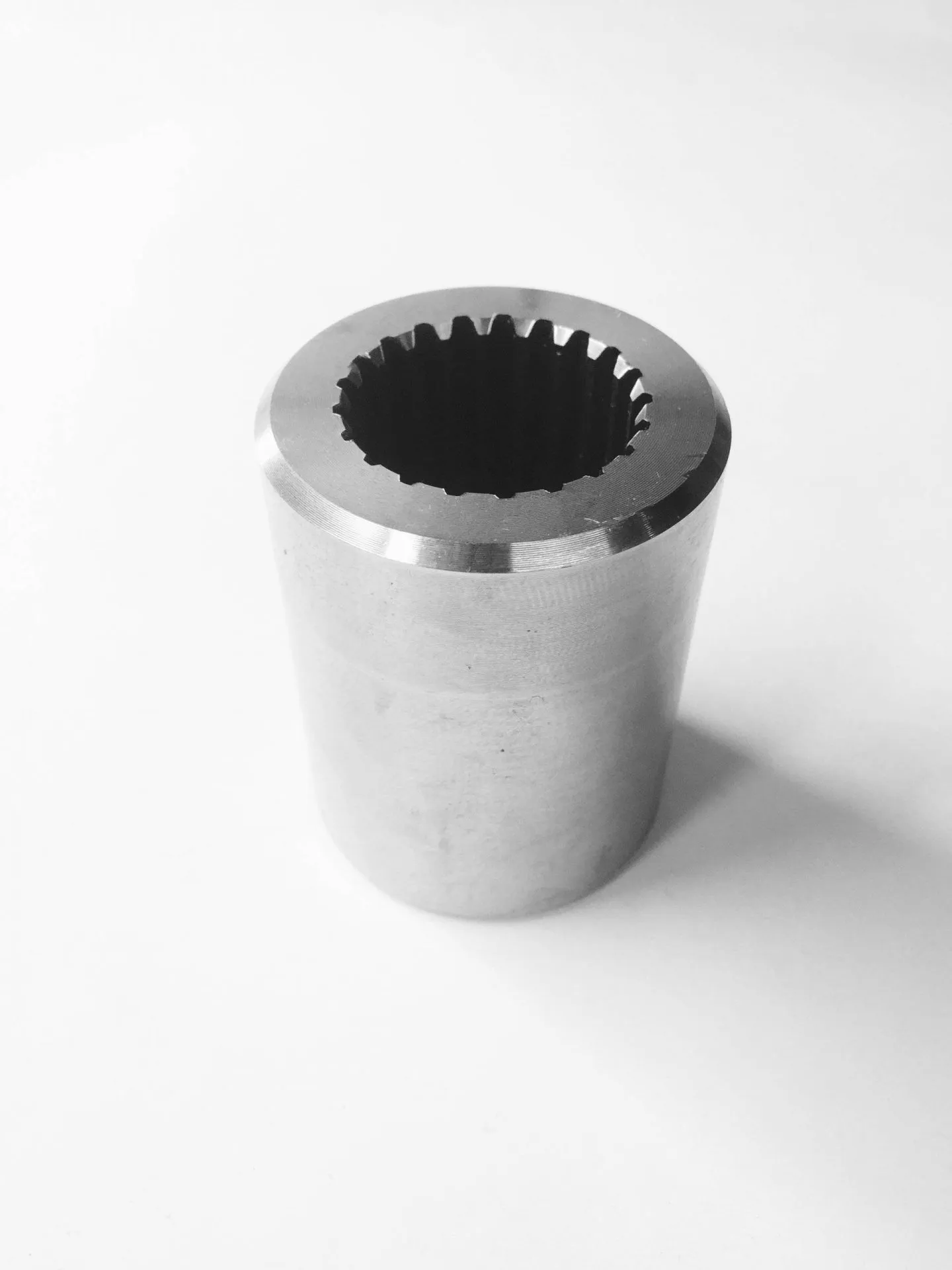
Can I find information on the compatibility of plastic bushings with different shaft materials?
Yes, you can find information on the compatibility of plastic bushings with different shaft materials. It is important to consider the compatibility between the bushing material and the shaft material to ensure proper functioning, minimize wear, and prevent damage. Here are some sources where you can find information on the compatibility of plastic bushings with different shaft materials:
- Manufacturer Documentation: Manufacturers of plastic bushings often provide information about the compatibility of their bushings with various shaft materials. This information may be available in their technical documentation, catalogs, or product datasheets. Look for details on recommended shaft materials, material pairings to avoid, and any specific considerations or limitations regarding compatibility.
- Engineering Handbooks and Reference Guides: Engineering handbooks and reference guides related to tribology, materials science, or mechanical design can offer valuable insights into the compatibility of plastic bushings with different shaft materials. These resources may provide compatibility charts, tables, or guidelines based on material properties, surface finishes, lubrication requirements, and other relevant factors. Consult reputable handbooks or reference guides that cover the specific materials involved in your application.
- Online Databases and Technical Resources: There are online databases and technical resources dedicated to providing material compatibility information. These resources often include information on the compatibility of various materials, including plastic bushings and shaft materials. Examples include the MatWeb material database or material compatibility databases provided by material science organizations. Search for reliable online resources that have information on the compatibility of plastic bushings with different shaft materials.
- Consulting with Material Experts: If you require more specialized or specific information regarding the compatibility of plastic bushings with particular shaft materials, consider consulting with material experts or engineers who have expertise in the field of tribology or material science. These experts can provide guidance based on their knowledge and experience and help you determine the compatibility considerations for your specific application.
- Application Experience and Case Studies: Sometimes, information on the compatibility of plastic bushings with different shaft materials can be found through application experience and case studies. Industry forums, technical publications, or case study reports may provide insights into successful material pairings and real-world examples of compatibility. Engage with industry professionals, participate in relevant forums or communities, and explore technical literature to learn from others’ experiences and gain valuable information on material compatibility.
When assessing the compatibility between plastic bushings and shaft materials, factors such as material hardness, surface finish, lubrication, operating conditions, and expected loads should be taken into account. It is important to choose a plastic bushing material that is compatible with the specific shaft material to ensure proper functioning, minimize wear, and achieve the desired performance and lifespan of the bushing.
By utilizing the available resources and expertise, you can find information on the compatibility of plastic bushings with different shaft materials, enabling you to make informed decisions and select the appropriate bushing and shaft combination for your application.
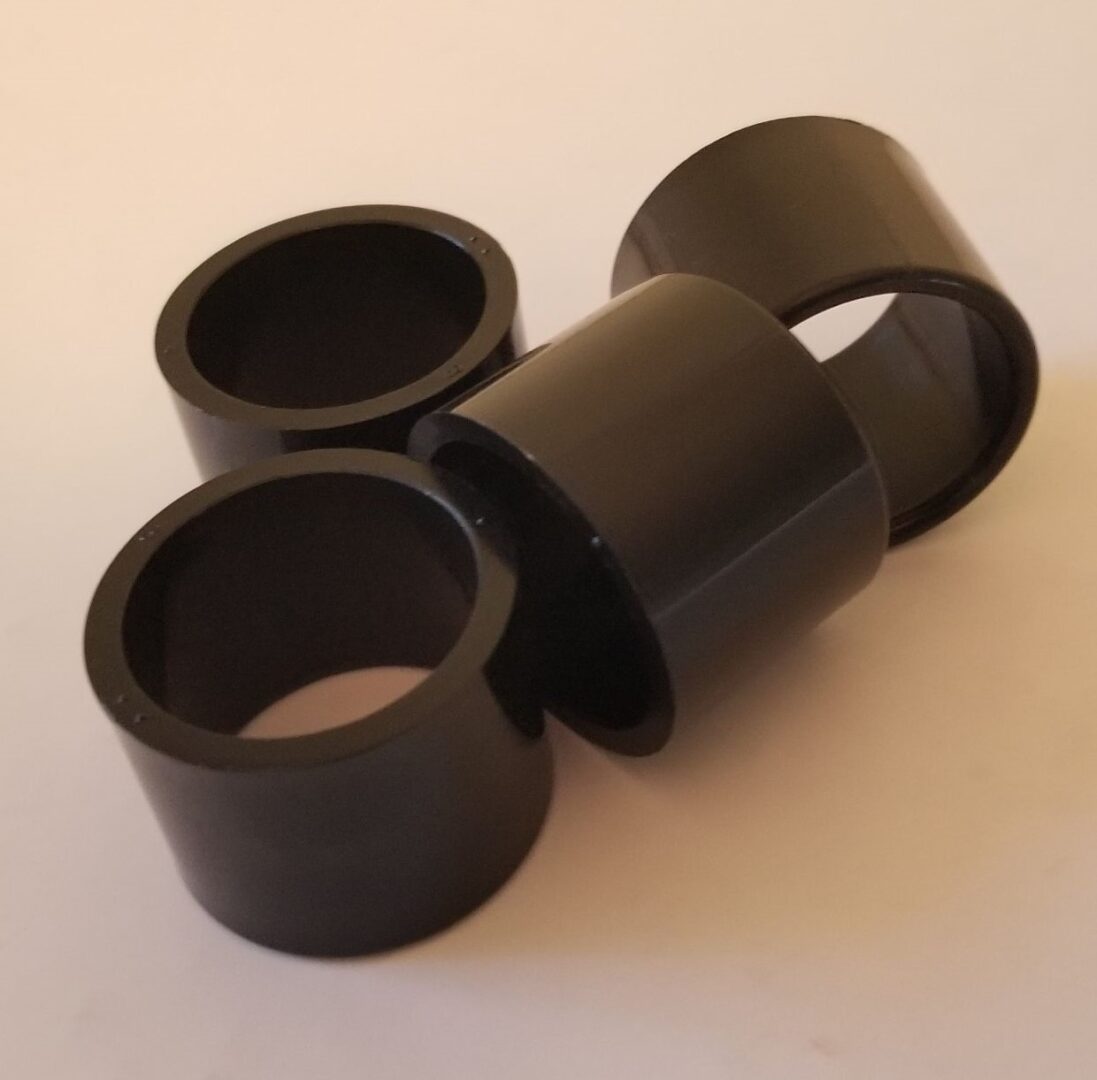
What are the key considerations when selecting plastic bushings for corrosive environments?
When selecting plastic bushings for corrosive environments, it’s essential to consider several key factors to ensure the longevity and performance of the bushings. Corrosive environments can pose significant challenges to materials, including degradation, chemical attack, and loss of mechanical properties. Here are the key considerations when selecting plastic bushings for corrosive environments:
- Chemical Compatibility: The first and foremost consideration is the chemical compatibility of the plastic material with the corrosive substances present in the environment. Different plastics have varying degrees of resistance to specific chemicals. It’s crucial to identify the types of corrosive chemicals, acids, bases, solvents, or other substances that the bushings will be exposed to and choose a plastic material that offers excellent resistance to those specific chemicals.
- Material Selection: Certain plastic materials are known for their superior chemical resistance properties. For corrosive environments, consider using plastic materials such as PTFE (Polytetrafluoroethylene), PVDF (Polyvinylidene Fluoride), PPS (Polyphenylene Sulfide), or ETFE (Ethylene Tetrafluoroethylene). These materials offer excellent resistance to a wide range of corrosive chemicals and can withstand harsh environments.
- Temperature Range: In addition to chemical compatibility, consider the temperature range of the corrosive environment. Some plastics may have temperature limitations and can degrade or lose their chemical resistance properties at elevated temperatures. Ensure that the selected plastic material can withstand the temperature range of the corrosive environment without compromising its performance or chemical resistance.
- Load and Wear Requirements: Evaluate the load and wear requirements of the application. Corrosive environments may involve abrasive particles or high loads that can accelerate wear and reduce the lifespan of the bushings. Select plastic materials that offer excellent wear resistance and can withstand the specific load conditions of the application.
- Sealing and Contamination: Corrosive environments often involve the presence of moisture, gases, or contaminants. Consider whether the bushings need to provide sealing properties to prevent ingress of corrosive substances or contamination. Some plastic bushings can be designed with additional sealing features to enhance protection against corrosive elements.
- UV and Weather Resistance: If the corrosive environment involves exposure to sunlight or outdoor weather conditions, consider the UV resistance and weatherability of the plastic material. Some plastics may degrade or experience color fading when exposed to prolonged sunlight or extreme weather conditions. Choose a plastic material that offers good UV resistance and weather resistance properties if applicable.
- Manufacturer Expertise: Work closely with manufacturers or suppliers who have expertise in providing plastic bushings for corrosive environments. They can offer guidance on material selection, design considerations, and provide specific recommendations based on their experience and knowledge of different plastic materials and their performance in corrosive environments.
It’s important to thoroughly assess the corrosive environment and consult with experts to ensure the right plastic material is selected for the bushings. Conduct compatibility tests, review material datasheets, and consider real-world application experiences to make an informed decision. Additionally, proper installation, regular inspection, and maintenance practices should be followed to maximize the performance and lifespan of the plastic bushings in corrosive environments.
By considering these key factors, you can select plastic bushings that are well-suited for corrosive environments, providing reliable and long-lasting performance even in the presence of corrosive substances.


editor by CX 2024-05-09
China Hot selling Customized Metric Sleeve Reducer Drill Flange Bush Aluminum Bushing Stainless Steel Iron Plastic Copper Bronze Brass Bushings supplier
Product Description
Customized metric sleeve reducer drill flange bush aluminum bushing stainless steel iron plastic copper bronze brass bushings
Basic Information :
| Tolerance | 0.02~0.1mm. |
| Materials | Low, middle,high carbon steel / spring steel / Stainless steel 201, 301, 304, 316 / Aluminum / Brass / Bronze / Copper / Titanium / Plastic (PP, Nylon, PVC, APET) Brass or ABS,POM Ect And Customized raw material. |
| Surface Finish | Heat treatment / Polishing,Electronic Polishing / (Zinc, nickel, chrome, tin, brass, glod, silver, titanium) Plating / Electrophoresis / Black Oxide / Hot-dip galvanizing / Powder Coating / Paint Coating / Blasting / Shot Blasting / Bead Basting / Anodizing / Phosphating / PAD Printing / Laser etching / Dacromet Coating / Enamel. |
| Payment terms | Trade Assurance TT,paypal,Western Union,alipay,L/C. |
| Packing Detail |
Inner Packing: PE bag / EPE Foam Packing / Anti-Rust Paper Packing / Blister / SMT / Vacuum Packing / Plastic Box Packing / Color Box Packing. Outter Packing: Stretch Film Packing / Carton / Pallet / Wood Case. |
Our Advantage
-
Provide OEM/ODM service and assembling service, since 2000.
- One-stop purchasing service :Stamping part, CNC lathe part, CNC milling part, Springs, Shafts, fastener etc.
- The 2ndtier supplier of , factory audits passed.
- Product certification: RoHS, HE, vailable.
- Management certification: ISO/9001: 2015 and IATF16949 Passed.
/* January 22, 2571 19:08:37 */!function(){function s(e,r){var a,o={};try{e&&e.split(“,”).forEach(function(e,t){e&&(a=e.match(/(.*?):(.*)$/))&&1
| Customized: | Customized |
|---|---|
| Certification: | ISO |
| Standard Parts: | No |
| Universal: | Custom Service |
| Type: | Bushing |
| Material: | Brass |
| Samples: |
US$ 50/Piece
1 Piece(Min.Order) | |
|---|
| Customization: |
Available
| Customized Request |
|---|
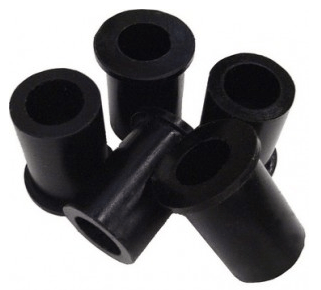
Can I get advice on choosing plastic bushings for noise reduction in machinery or equipment?
If you are seeking advice on choosing plastic bushings for noise reduction in machinery or equipment, consider the following factors:
1. Material Selection:
– Look for plastic bushings made from materials specifically designed for noise reduction, such as acetal (POM), nylon, or polyurethane. These materials have inherent damping properties that can help reduce vibrations and noise.
– Consider the operating conditions of your machinery or equipment. Ensure that the chosen plastic bushings can withstand the temperature, humidity, and chemical exposure of the application environment.
2. Design and Fit:
– Choose bushings with a design that matches the specific requirements of your machinery or equipment. Consider factors such as the load-bearing capacity, clearance, and fit tolerance.
– Opt for bushings with a tight fit to minimize movement and vibration, which can contribute to noise generation. A snug fit can help dampen vibrations and reduce noise effectively.
3. Lubrication and Maintenance:
– Plastic bushings often require lubrication to minimize friction and noise. Consider whether the chosen bushings need periodic lubrication or if they are self-lubricating.
– Evaluate the maintenance requirements of the bushings. Some plastic bushings may require regular inspection and replacement if they wear out quickly, while others have a longer lifespan.
4. Compatibility and Performance:
– Ensure that the chosen plastic bushings are compatible with the machinery or equipment they will be used in. Consider factors such as shaft material, surface finish, and operating speed to ensure optimal performance.
– Look for bushings that have been specifically tested or certified for noise reduction applications. Manufacturers may provide information on noise reduction capabilities, such as decibel reduction or noise attenuation levels.
5. Expert Advice and Supplier Support:
– Consult with experts or suppliers specializing in plastic bushings for noise reduction applications. They can provide valuable guidance based on their knowledge and experience.
– Explain your specific requirements and provide details about the machinery or equipment to receive tailored recommendations and ensure the best possible noise reduction solution.
By considering material selection, design and fit, lubrication and maintenance, compatibility and performance, and seeking expert advice and supplier support, you can make an informed decision when choosing plastic bushings for noise reduction in machinery or equipment. Prioritize noise reduction properties while ensuring compatibility with the application and considering long-term performance and maintenance needs.
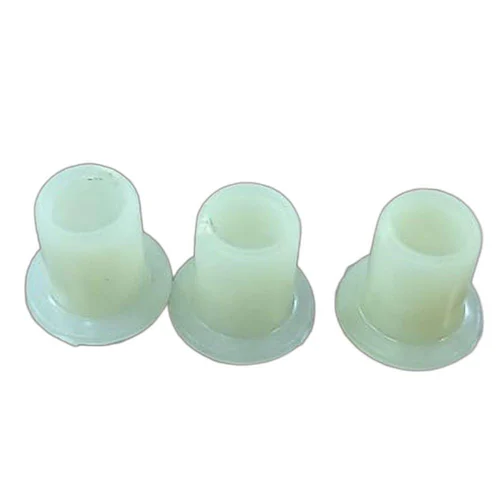
What are the common sizes and dimensions of plastic bushings, and how do I choose the right one for my application?
When selecting plastic bushings, it’s important to consider the appropriate sizes and dimensions to ensure compatibility with your application. Common sizes and dimensions of plastic bushings can vary depending on the specific industry and application requirements. Here’s some information to help you understand the common sizing aspects and guide you in choosing the right plastic bushing for your application:
- Inner Diameter (ID): The inner diameter refers to the measurement of the opening of the bushing, which corresponds to the shaft or pin it will be mounted on. It is crucial to select a plastic bushing with an inner diameter that matches the diameter of the shaft or pin in your application. Measuring the shaft or pin accurately will help you determine the appropriate inner diameter of the bushing.
- Outer Diameter (OD): The outer diameter refers to the measurement of the outside surface of the bushing. It corresponds to the bore or housing in which the bushing will be inserted. Ensure that the outer diameter of the plastic bushing matches the dimensions of the bore or housing to achieve a proper fit and alignment.
- Length: The length of the plastic bushing is the distance between the two ends of the bushing. It determines the amount of space occupied by the bushing within the application. Consider the available space and clearance in your application to select a plastic bushing with an appropriate length that fits without interference.
- Flange or Collar: Some plastic bushings may have a flange or collar at one end, which provides additional support or acts as a stopper. The presence of a flange or collar can affect the overall dimensions and installation requirements of the bushing. Determine if your application requires a bushing with a flange or collar, and consider the additional dimensions it adds to the overall size.
- Wall Thickness: The wall thickness of the plastic bushing refers to the thickness of the material between the inner and outer surfaces of the bushing. It plays a role in determining the strength and load-bearing capacity of the bushing. Consider the expected loads and forces in your application to select a bushing with an adequate wall thickness to handle the required load requirements.
In order to choose the right plastic bushing for your application, it is recommended to follow these steps:
- Identify the specific dimensions and requirements of your application, such as the required inner diameter, outer diameter, length, and any additional considerations like flanges or collars.
- Refer to the manufacturer’s documentation, catalogs, or product datasheets to identify plastic bushings that match your required dimensions and meet the performance criteria for your application.
- Consider the load capacity, speed limitations, temperature range, and other relevant factors specified by the manufacturer to ensure the selected bushing meets the performance requirements of your application.
- If necessary, consult with application engineers or technical experts who can provide guidance based on their experience and knowledge of plastic bushings.
- Procure a sample or a small quantity of the selected plastic bushing to test its fit, function, and performance in your specific application before proceeding with larger-scale implementation.
By considering the common sizes and dimensions of plastic bushings and following the selection process outlined above, you can choose the right plastic bushing that fits your application’s requirements, ensuring proper functionality and performance.
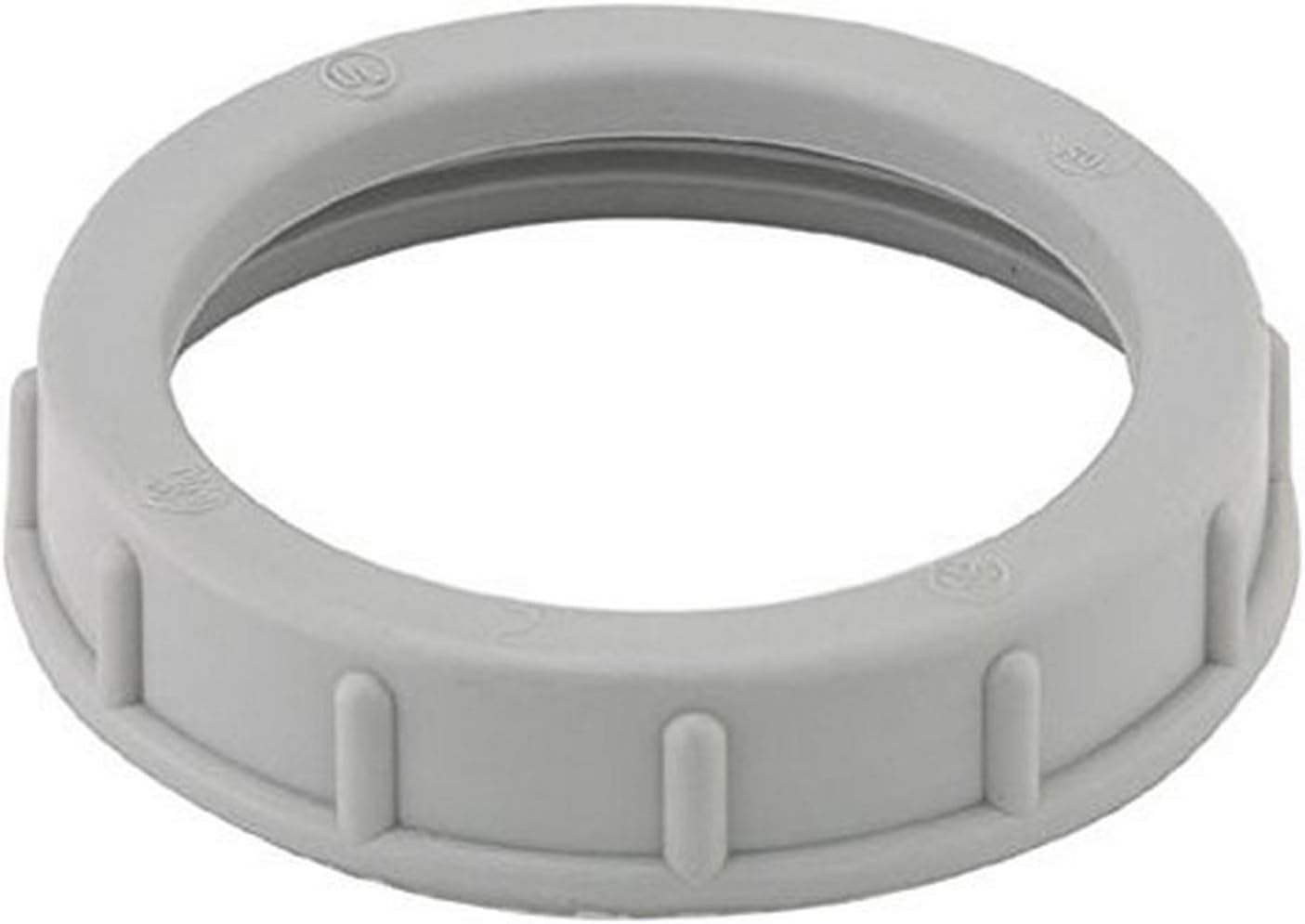
What are the advantages of using plastic bushings over traditional metal bushings in machinery?
Using plastic bushings in machinery offers several advantages compared to traditional metal bushings. Plastic bushings, also known as polymer bushings or plain bearings, are made from various synthetic materials such as nylon, PTFE (polytetrafluoroethylene), UHMW (ultra-high-molecular-weight polyethylene), or composite polymers. Here are some advantages of using plastic bushings:
- <strong(Self-Lubrication): Plastic bushings often have inherent self-lubricating properties. They contain solid lubricants or have low-friction surfaces, reducing the need for additional lubrication. This feature reduces maintenance requirements, eliminates the risk of oil or grease contamination, and improves the overall reliability and cleanliness of the machinery.
- Low Friction and Reduced Wear: Plastic bushings typically exhibit low coefficients of friction, resulting in smoother operation and reduced wear on mating surfaces. The lower friction reduces energy consumption and heat generation, contributing to improved efficiency and extended equipment lifespan.
- Noise Reduction: Plastic bushings often dampen vibration and noise, resulting in quieter machinery operation. This is particularly beneficial in applications where noise reduction is essential, such as in consumer appliances or precision equipment.
- Corrosion Resistance: Unlike metal bushings, plastic bushings are generally resistant to corrosion and chemicals. They can withstand exposure to harsh environments, including moisture, chemicals, and certain acids or alkalis, without deteriorating. This corrosion resistance contributes to longer service life and reduced maintenance requirements.
- Lightweight: Plastic bushings are typically lighter than their metal counterparts. This can be advantageous in applications where weight reduction is important, such as in automotive or aerospace industries, as it can contribute to improved fuel efficiency and overall performance.
- Cost-Effectiveness: Plastic bushings are often more cost-effective compared to metal bushings. They can be produced at a lower cost, and their self-lubricating properties eliminate the need for additional lubricants and associated maintenance costs. Additionally, plastic bushings can reduce the wear on mating parts, extending the lifespan of the overall system and reducing replacement costs.
- Design Flexibility: Plastic bushings offer design flexibility due to their ability to be molded into complex shapes. This allows engineers to design customized bushings to fit specific applications, optimizing performance and reducing the need for additional components or modifications.
It’s important to note that the advantages of plastic bushings may vary depending on the specific application and operating conditions. In certain high-load or high-temperature scenarios, metal bushings may still be preferred. Therefore, it’s crucial to consider factors such as load capacity, temperature range, speed, and environmental conditions when selecting the appropriate bushing material for a given machinery application.
By leveraging the advantages of plastic bushings, machinery can benefit from improved performance, reduced maintenance, extended lifespan, and enhanced overall efficiency.


editor by CX 2024-03-30